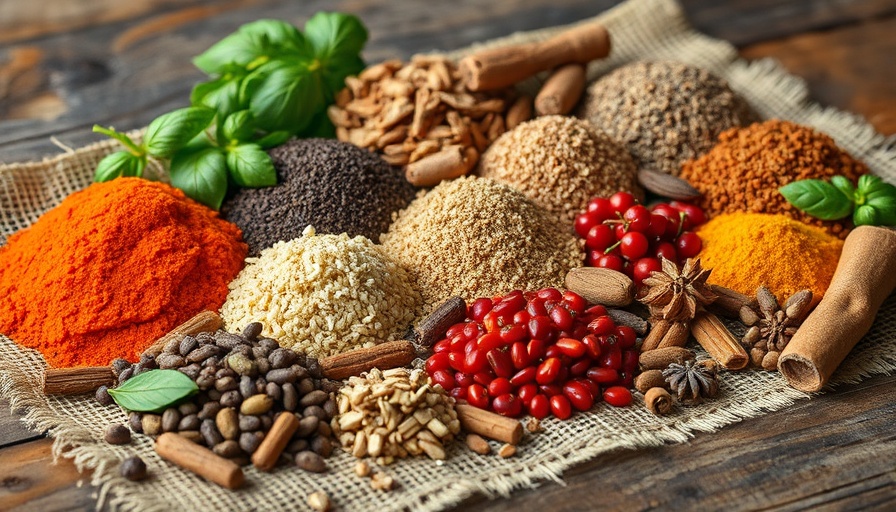
Unlocking Culinary Wonders: Spices You Must Stock
Whether you're a seasoned chef or a home cooking enthusiast, having the right spices in your pantry can turn plain dishes into extraordinary culinary experiences. Spices are not just flavor enhancers; they are the secret ingredients that can embody cultural traditions, health benefits, and seasonal changes in your meals. In this guide, we'll delve into essential spices that every kitchen should contain, their myriad uses, and even some tips on how to store them for longevity.
The Essentials of Every Pantry
Let's explore some pivotal spices that should be on your radar:
Cumin: Versatility at Its Best
Cumin is a cornerstone spice in various cuisines, particularly in Indian, Mexican, and Middle Eastern dishes. Its warm, earthy flavor enhances curries, roasted vegetables, and chili. Ever tried toasting whole cumin seeds before grinding them? This simple step intensifies its aroma and delivers a flavor punch that ground cumin alone cannot achieve. Investing in cumin is, without a doubt, a move towards elevating almost any dish.
Paprika: A Colorful Addition
Paprika’s vivid shades bring aesthetics and taste to the table. Depending on the variety, it can range from mildly sweet to fiery hot—ideal for adding depth to stews and vibrant colors to rice dishes. It is predominantly used in Spanish and Hungarian cuisines, where it stands out in recipes like goulash or paella.
Garlic Powder: A Time-Saving Hero
Garlic powder is the ultimate time-saver. While fresh garlic is irreplaceable for its bright flavor, garlic powder can seamlessly step in when time is of the essence. Use it judiciously in marinades, sauces, and rubs; a little goes a long way!
Cinnamon: Beyond Sweet Treats
Cinnamon is an aromatic spice typically associated with cozy desserts, but it offers immense versatility. From enhancing savory dishes such as curries to adding warmth to baked goods, it has a glorious place in both the sweet and savory realms.
Chili Powder: Elevating Heat Levels
Comprised of ground chili peppers mixed with various spices like cumin and garlic, chili powder adds not just heat but complexity to dishes. It shines in tacos, chili, and surprisingly, even chocolate desserts, proving that spicy does not mean limiting.
Oregano: Italian Classic
As a staple herb in Italian and Mediterranean cuisine, oregano packs a robust yet slightly bitter flavor ideal for tomato-based dishes, pizzas, and roasted vegetables. Dried oregano commands a more intense flavor than fresh, making it a valuable addition to your spice rack.
Turmeric: The Golden Spice
This vibrant yellow spice is essential in Indian cooking, adding warmth and a slight bitterness to dishes. Turmeric not only enhances color but also boasts anti-inflammatory properties, making it a well-rounded ingredient for both flavor and health.
Ginger: Zesty Freshness
Whether fresh or dried, ginger brings a refreshing zing to your meals. It is commonly found in Asian cuisines, especially in stir-fries and marinades, and pairs well with both savory dishes and baked goods.
How to Organize Your Pantry for Optimal Use
A well-organized spice cabinet can significantly ease your cooking process. Place frequently used spices at eye level; lesser-used spices can be stored on higher shelves. Consider investing in a spice rack or labeled jars to avoid confusion and build a visually appealing collection.
Health Benefits of Spices
Aside from their flavor-enhancing abilities, many spices come packed with health benefits. For instance, turmeric’s curcumin is known for its antioxidant properties, while garlic powder can support heart health. Incorporating a variety of these spices into your meals not only adds taste but also boosts nutritional value.
Storing Spices for Longevity
To maximize the shelf life of your spices, store them in a cool, dark place, ideally in airtight containers to prevent moisture and light degradation. Spices maintain their potency for several years when properly stored, but their flavors will gradually diminish over time, especially for ground spices. Regularly check expiration dates and replace them as necessary.
Conclusion: Create Culinary Magic
Stocking your pantry with essential spices is a delightful endeavor that promises to transform your everyday meals into culinary masterpieces. Not only do spices enhance flavor, but they also bring warmth, health benefits, and even nostalgia into your cooking. As you embark on this flavorful journey, challenge yourself to explore new spices, and don't hesitate to get creative with your recipes. The possibilities are endless!
 Add Row
Add Row  Add
Add 




 Add Row
Add Row  Add
Add 

Write A Comment